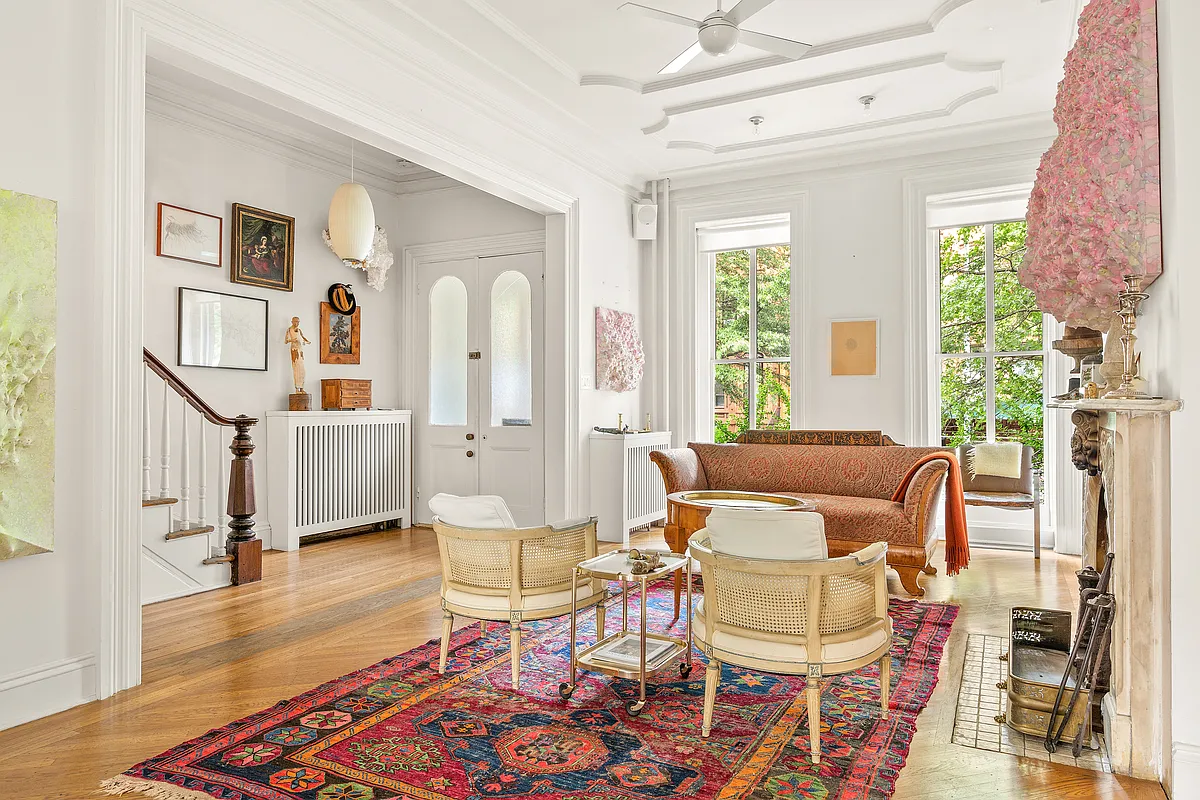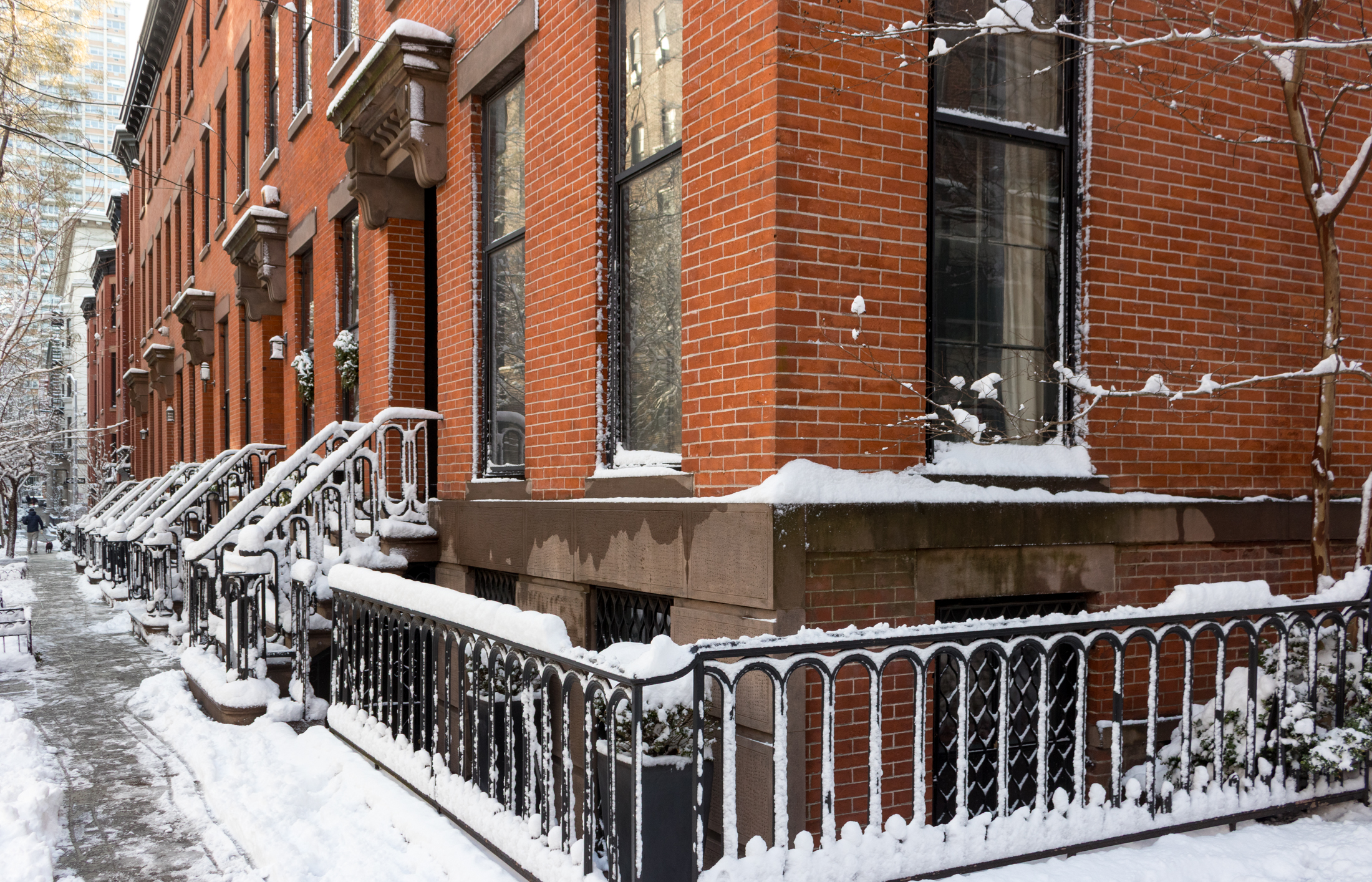Inside Third & Bond: Week 67
The Open Kitchen The era of the open kitchen has been with us for awhile now and it has had profound implications for what the kitchen means as a space in the home. No longer is it the narrow galley down the hall and behind the swinging door. More often than not in NYC condos…


The Open Kitchen
 The era of the open kitchen has been with us for awhile now and it has had profound implications for what the kitchen means as a space in the home. No longer is it the narrow galley down the hall and behind the swinging door. More often than not in NYC condos today, the kitchen opens up onto a living space. From your spot at the stove, you can look out over the counter top to watch your kids playing on the couch, speak with dinner guests crowded around the island on bar stools, or catch the inauguration on your plasma tv.
The era of the open kitchen has been with us for awhile now and it has had profound implications for what the kitchen means as a space in the home. No longer is it the narrow galley down the hall and behind the swinging door. More often than not in NYC condos today, the kitchen opens up onto a living space. From your spot at the stove, you can look out over the counter top to watch your kids playing on the couch, speak with dinner guests crowded around the island on bar stools, or catch the inauguration on your plasma tv.
The open kitchen offers developers…
…more leeway in the configuration of the living/dining/kitchen areas and gives inhabitants a more expansive sense of their own space. It also heightens the importance of the kitchen’s look. We love Rogers Marvel Architects’ design sense and had fun designing the kitchens. We love the look of the kitchen and hope our potential buyers will, too.
The Look
 The upper cabinets will be white laminate glass with a metal frame. The glass is opaque or semi-opaque enough so that you can’t see the cereal boxes inside. The lower cabinets will be quarter sawn walnut veneer in a caramel-like tone. (The counter top is a light gray and the floor is white oak.) The size of the cabinets, locations of drawers, and the hardware is also determined by the architect.
The upper cabinets will be white laminate glass with a metal frame. The glass is opaque or semi-opaque enough so that you can’t see the cereal boxes inside. The lower cabinets will be quarter sawn walnut veneer in a caramel-like tone. (The counter top is a light gray and the floor is white oak.) The size of the cabinets, locations of drawers, and the hardware is also determined by the architect.
Walnut-veneer vs. Walnut-laminate veneer
Once we have the design, we send out the drawings and specifications to manufacturers for bidding. They send us a scope and a price. We received 7 vendor bids for this project so far. In order to compare the bids, we look for discrepancies between their scope and our specification. For example, we want walnut veneer but they might say their price is for walnut laminate veneer, which sounds like a plastic made to look like wood veneer. In an ideal world, the bid would be for exactly what we’ve specified and maybe include an alternate proposal that is less expensive using slightly different materials. Rarely is life ideal though so we spend time qualifying the bid, which means figuring out what exactly the price includes, misses, or gets plain wrong.
Costs
Our 7 bids ranged from $153,000 to $421,000. A big chunk of the discrepancy is in how they interpret what we want. Other cost differences can be attributed to where the product is manufactured. Products made overseas might be cheaper but carry additional costs such as duty. Another cost factor is whether the cabinetry is green. Forest Stewardship Council certified wood is more expensive. Not all of the companies do the no added urea-formaldehyde resins as standard practice. So while we’d like to have green cabinets, it might not become reality.
When reviewing the bids, we dropped off the lowest one because it seemed too far from reality and we dropped off the three highest. The remaining three contenders include two local and one Turkish company. Right now we are collecting samples and sitting down with sales reps to go over materials, corners, edges, hinges everything, in excruciating detail. We also drill them on installation issues like lead time, whether the kitchens come assembled or in pieces, the process for replacement parts, etc.
Form + Function
Once the installation is behind us, we still have look and longevity issues ahead. We want the kitchens at selling time to look fresh compared to condos on the market now but we also want to stay fairly neutral—no leopard print for us! The functionality of the cabinetry is equally important in enticing savvy buyers (where’s the silverware drawer?), and well-performing cabinetry (no busted hinges or cracked veneers) is important in minimizing maintenance and replacement costs later.
Kitchens: Spend Money Here
 All in all the kitchens are a place worth spending some real money. It is the one communal space in the home that has form and function determined the day buyers take ownership. The other spaces—bedrooms, living rooms, offices—are basically big white boxes. If they walk in and hate the heart of the home then it’s hard to swing their opinion on the rest of it. Especially when the heart is prominent to the living space as open kitchens are. So, we are continuing on our quest to get the kitchens we designed in the quality we desire… more on the selected bidder later.
All in all the kitchens are a place worth spending some real money. It is the one communal space in the home that has form and function determined the day buyers take ownership. The other spaces—bedrooms, living rooms, offices—are basically big white boxes. If they walk in and hate the heart of the home then it’s hard to swing their opinion on the rest of it. Especially when the heart is prominent to the living space as open kitchens are. So, we are continuing on our quest to get the kitchens we designed in the quality we desire… more on the selected bidder later.
Inside Third & Bond: Weeks 1-65 [Brownstoner]
From our lawyers: This is not an offering. No offering can be made until an offering plan is filed with the Department of Law of the State of New York.”





So on the open kitchen, you do not need to have a duct as long as there is a window within a certain distance right? That presumably includes even the adjacant living room window? And whats the distance? 30 feet?
Thanks, Ive been trying to figure this one out…
80 Sq. Ft. – Kitchen / Under 80 Sq. Ft. – Kitchenette and therefore does not need window, can be mechanically ventilated …. blah , blah , blah
Is it just me or is this post to take the readers mind of that they are still doing the foundations !!!!! 67 Weeks !!!!
Pathetic.
Go learn how to build from the Avalon Bay project on Myrtle. They started the project a couple of months ago an already on the 12th floor.
Hudson Co. = Pathetic.
Okay, after I hit post, I realized that I could be wrong on that number. The building code was recently revised and I’m not that up on the new codes yet.
I could check on line but I hate navigating the codes on the DOB site.
so sorry. If I feel ambitious I’ll find it.
Those prices better not be per kitchen.
A kitchen greater than 59 sq. ft. needs to be vented by a window; and of course there’s guidelines to how big the window needs to be. A kitchen smaller than that can be vented mechanically; and of course there’s guidelines as how much cfm’s…blah, blah, blah.
The prices you quoted–is that for cabinets for the whole building? It can’t be per kitchen…
If you hate looking at pots while you eat you cannot avoid them with an open kitchen. It makes your fridge and stove a focal point for your living room. Hate them. Fine for mcmansions with “great rooms”; not so for apartments with one living/ding — and now cooking — area.
My complaint with a lot of new construction is that the kitchens are postage stamp size. They’re designed for the single professional who works long hours and orders in. I’m not a professional chef, but I still need adequate space to store kitchen appliances, pots and pans, dishware, glassware, and still have pantry space.
I have an eat-in kitchen and while it’s great to talk to friends while I cook, I HATE looking at the pots while we eat. Most people don’t seem to mind that though because the open kitchen is the most popular style. I know several people who did not buy in Pre-War buildings because of cook-in kitchens. I don’t think this developer has any other choice.
??There are also size requirements as to how small a kitchen can be without a window?? Curious does anyone know how small?